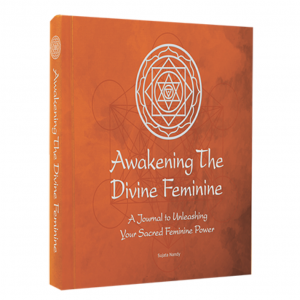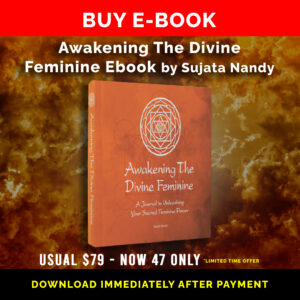For centuries, tantra has been misrepresented in both the West and the East. To this day, in India, tantra is recurrently associated with black magic, curses and apparently peculiar behaviour concerning the dark realms, corpses, cremation grounds and the underworld. Whilst these and other dangerous kinds of practices can be found in Vama Marga (left path tantra), they are not as offensive as they sound, typically being performed for the greater good of all who come to the practice.
Whilst most Hindus have a distasteful delusion of tantra, the undeniable fact remains, that the majority of ‘Hindu,’ practices and the deities most commonly worshipped in India, come directly from tantra rather than from the Vedas as is commonly thought – tantra is the key collaboration that propels worship in Hinduism.
Equally erroneous in the West, the word ‘tantra,’ is taken to mean a kind of pseudo-spiritual sexual practice involving an assortment of new age techniques such as free form dancing, dynamic movement, eye gazing, genital massage and dry humping, (for want of a better word).
Although all these can be valuable for one’s individual and sexual growth, it is unclear whether or not these practices are distinctly tantric, just as walking the dog, washing the dishes, or having sex are not blatantly tantric, and their association to what was conventionally called tantra by the gurus and ancient texts in India, is unfounded at best.
This said however, in the framework of tantra as a way of being, it is the attitude with which any endeavour is carried out which dictates its tantrik authenticity and the tantrik masters of the yesteryears were radical in their teachings, prescribing whatever that worked for the individual student including undoubtedly, all of the above and more. It is said that tantra is a life affirming canon so essential, that it not only consist of sexuality but raises it to one of the highest methods of worship.
So, in this setting, tantra is a sacred attitude of profound reverence and intimacy with all of life. It is an intensely sensual and intimate conscious participation with the intensity of the moment in whatever it presents, however outwardly predictable it may be. The tantrik masters of both India and Tibet spoke of how one should savour these modest acts as if they were a form of worship, whether it be as simple as driving, listening to music, drinking a cup of tea, meditating or having sex. These activities become sanctified and cognizant, enriching the spirit beyond the ordinary, psychical plane to the higher reaches of consciousness.
So, by this definition, almost anything can be tantrik. The problem is however, the practices involving sexual energy are somewhat unconventional and even more so, involve more than one person, such as maithuna (ritual sex), so in reality what is inclined to transpire is that, almost all modern day ‘tantra,’/neo-tantra activities miss the mark and go further to solidify body image, ego identification and narcissistic pleasure seeking. To some extent, this is down to the aim and the degree of consciousness of the individual facilitator and the individual practitioner.
As a custom, sexuality played a part in certain aspects of the ‘left path,’ tantra (Vama marga), although, it represents a small aspect inside the full scope of the science of tantra. That the West has taken the word ‘tantra,’ and emphasised and dented one aspect of it is of little wonder given our pre-occupation with and corrupted use of sexuality.
A big piece that is largely missing in sex is the aspect of devotion, which is imperative in sexual tantra. It is said that every time a man makes love or merges with a woman, Shiva makes love to Shakti but without true surrender, devotion, dedication and sublimation, this magical aspect of the love-making act is lost – this sexual act is merely a physical expression of an animalistic impulse. For the ardent practitioners, there are mainly three levels of sexual tantra that come to play when engaging with a partner and they include: one’s awareness with the gross or with the astral and the gross or with the astral or with the gross and the casual bodies. It becomes apparent from this that, sexual tantra is beyond the common understanding of merely love making and ‘scoring,’ but about connecting deep within before inviting your partner to join you into the realm of the unconscious conscious.
In order to be conscious of these subtle and devotional aspects, one must expand one’s awareness by exemplifying the archetype that your gender decrees. If Shiva is to unite with Shakti, then the male must become Shiva, one must see oneself as Shiva and at the same time, one must transform one’s partner and see her as Shakti – only then, can love making become an offering of worship in Their ‘lila,’ or play of consciousness and energy.
Sexual tantra is a way to merge with God through surrender to and service of your partner. Without bhakti, there is no tantra and without a penetrating, (no pun intended), desire to know the truth of who you are, to surpass the mind and realise God, the practices of pseudo-sexual tantra can become a distraction and a form of self-indulgent pleasure seeking – thus, it is pertinent, to have the right intentions when treading this path.
It is not blasphemous to speak of God and sex in the same sentence, in the tantrik medium of practise, for it is indicative of one’s passion and hunger towards merging with our own body’s true calling that sends us to our highest vibration of tuning within. It is when we become one with our body’s language of yearning, that we are in alignment with our higher Selves. What separates us from the rest of the animal kingdom is our deep need of acknowledging how we manifested with our partner and how deeply our partner responded to the stimuli of our union.







